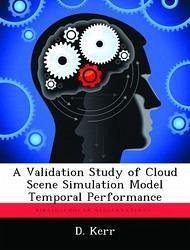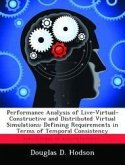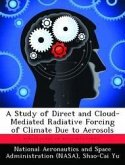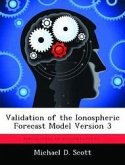Cloud Scene Simulation Model (CSSM) temporal performance was validated by comparing the cloud forcing signatures on observed radiometric time series with those derived from CSSM output for initial conditions similar to that for the observed data. Observed radiometric data was collected by a normal incidence pyraheliometer sensitive to wavelengths in the range .3um to 3um Simulation radiometric time series data was derived by applying the following process to each case study. CSSM cloud liquid water content (CLWC) grids were converted to grids of slant path optical depth values by the Fast Map post processor to the CSSM. A ray tracing routine then integrated the slant path optical depth values along a path from the position of the sun through each cloud volume to a point at its base. The position of the sun was fixed by ephemeris calculations for the time and location of the case study. The integrated optical depth values were then used with a modified form of Beer's Law to derive radiometric time series values.
Hinweis: Dieser Artikel kann nur an eine deutsche Lieferadresse ausgeliefert werden.
Hinweis: Dieser Artikel kann nur an eine deutsche Lieferadresse ausgeliefert werden.








